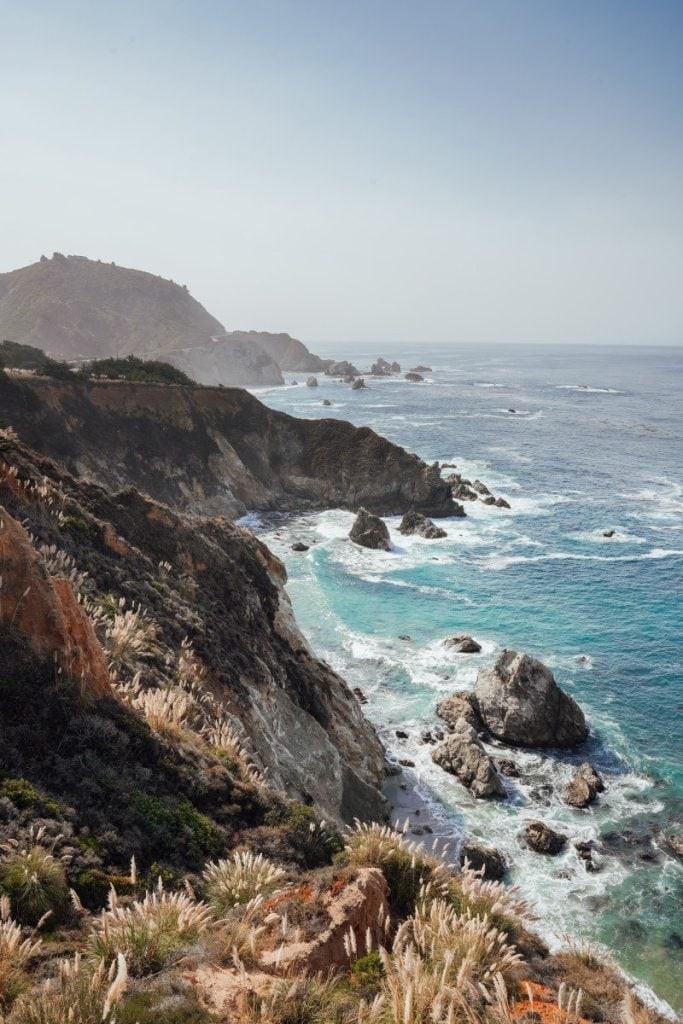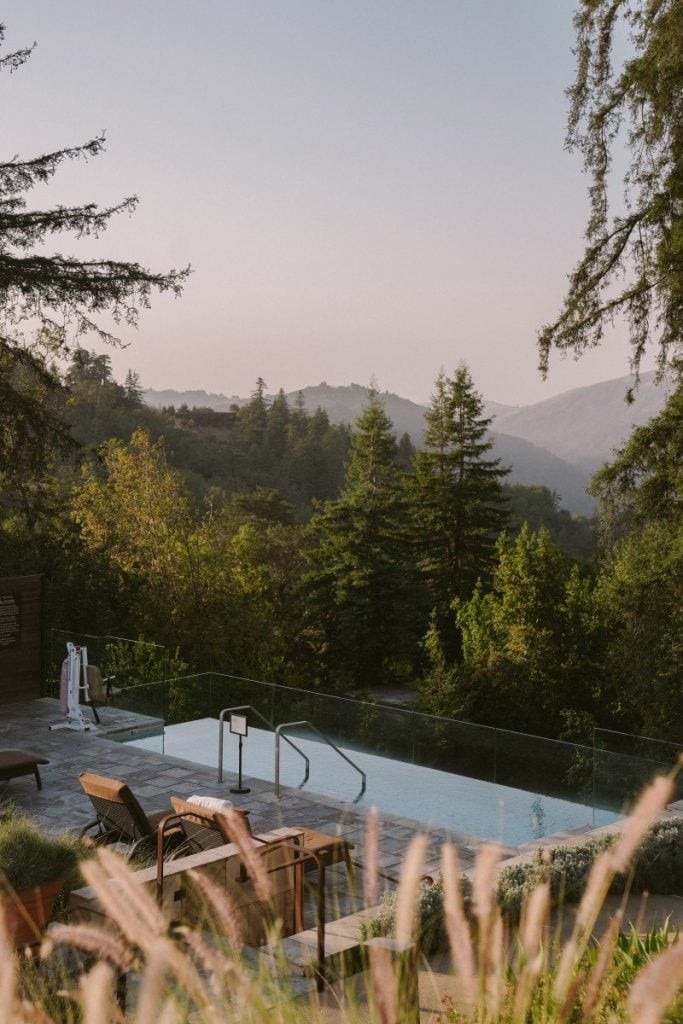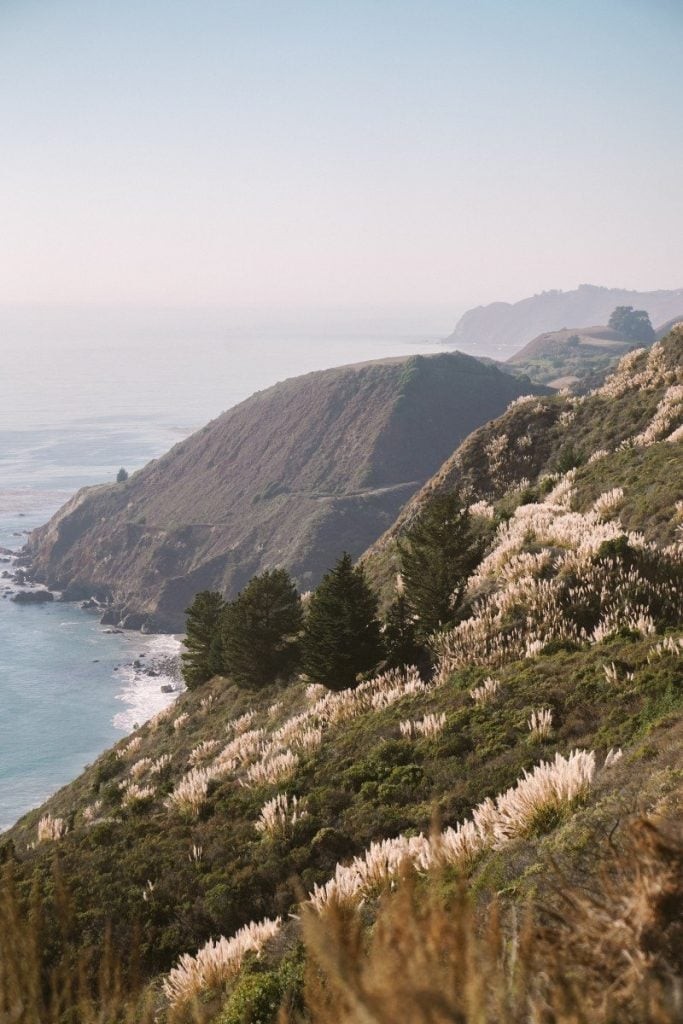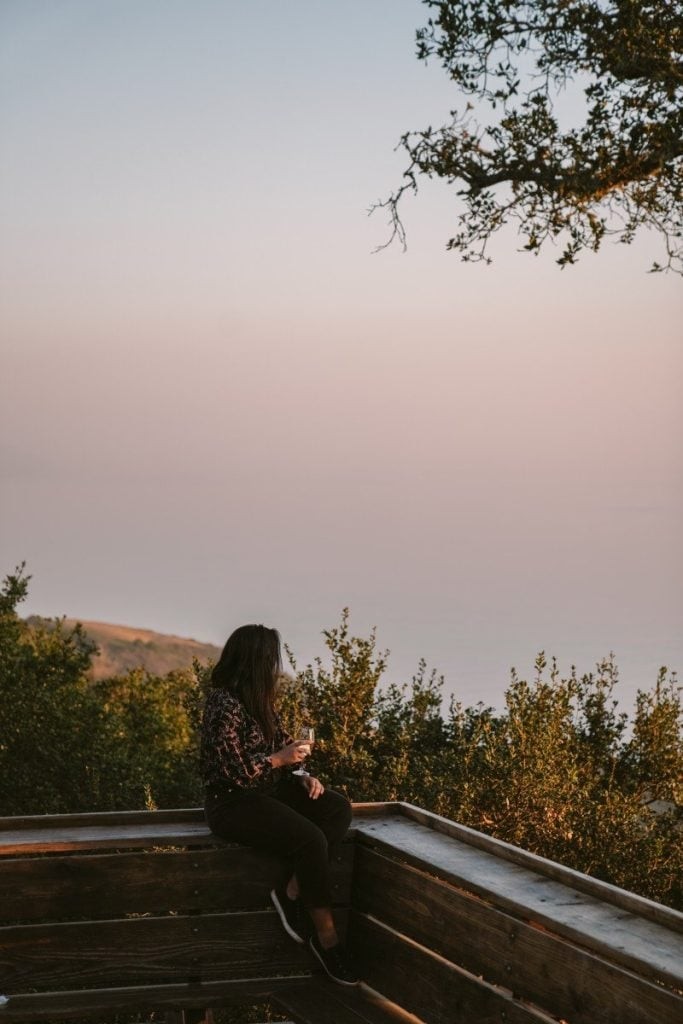Big Sur Travel offers an unparalleled coastal experience. SIXT.VN provides curated travel solutions designed to make your Big Sur adventure seamless, memorable, and tailored to your preferences. With SIXT.VN, navigating Big Sur’s scenic routes and iconic destinations becomes effortless, ensuring an unforgettable experience. Embrace the journey with confidence, exploring California’s hidden gems and breathtaking landscapes, backed by reliable travel services and expert local insights.
1. Understanding Big Sur Travel
Big Sur, a rugged and majestic stretch of California’s central coast, offers an unparalleled travel experience, marked by stunning natural beauty and outdoor adventures. It is a place where the Santa Lucia Mountains dramatically meet the Pacific Ocean, creating breathtaking views at every turn. Defined by winding roads, redwood forests, and iconic landmarks like the Bixby Creek Bridge, Big Sur attracts travelers seeking both tranquility and adventure.
1.1. What Makes Big Sur Travel Unique?
Big Sur’s unique appeal lies in its:
- Natural Beauty: From towering redwoods to dramatic coastal cliffs, the landscape is diverse and stunning.
- Outdoor Activities: Hiking, camping, and beachcombing are popular pastimes.
- Seclusion: It offers a peaceful escape from urban life, promoting relaxation and reflection.
- Iconic Landmarks: The Bixby Creek Bridge and Pfeiffer Big Sur State Park are must-see destinations.
- Local Culture: The area has a rich history and a vibrant arts scene.
This blend of natural wonders and cultural experiences makes Big Sur a destination unlike any other, offering something for every traveler.
1.2. Who Should Consider Big Sur Travel?
Big Sur is ideal for:
- Nature Lovers: Those who appreciate stunning landscapes and outdoor activities.
- Adventure Seekers: Hikers, campers, and explorers will find plenty to do.
- Romantic Getaways: The serene beauty makes it perfect for couples.
- Road Trippers: A must-stop destination along California’s Highway 1.
- Anyone Seeking Tranquility: A peaceful escape from the hustle and bustle of city life.
Whether you are looking for adventure or relaxation, Big Sur offers a unique and unforgettable experience.
2. Planning Your Big Sur Travel: A Step-by-Step Guide
Planning a trip to Big Sur requires careful consideration to ensure you make the most of your visit. From choosing the right time to visit to securing accommodations and mapping out your itinerary, here’s a step-by-step guide to help you plan your Big Sur travel:
2.1. Best Time to Visit Big Sur
The best time to visit Big Sur depends on your preferences regarding weather, crowds, and activities.
| Season | Weather | Crowds | Activities |
|---|---|---|---|
| Spring | Mild temperatures, wildflowers in bloom | Moderate | Hiking, whale watching, scenic drives |
| Summer | Warm and sunny, but can be foggy | High | Beach activities, camping, outdoor concerts |
| Fall | Mild temperatures, clear skies | Moderate | Hiking, wine tasting, photography |
| Winter | Cool and rainy, but fewer crowds | Low | Storm watching, cozy getaways, off-season rates |
- Spring (April-May): The weather is mild, and wildflowers are in full bloom, making it ideal for hiking and scenic drives.
- Summer (June-August): The warmest months, perfect for beach activities and camping, but expect larger crowds.
- Fall (September-October): Offers clear skies and mild temperatures, excellent for hiking and photography.
- Winter (November-March): Can be rainy, but fewer crowds and cozy getaways are possible.
According to research from the California Department of Parks and Recreation, in 2022, fall and spring are the best times to experience Big Sur travel with Z% fewer crowds, providing a balance of pleasant weather and fewer tourists.
2.2. How to Get to Big Sur
Big Sur is accessible by car, primarily via Highway 1.
Driving:
- From the North (San Francisco): Take Highway 1 south for a scenic but winding drive.
- From the South (Los Angeles): Take Highway 101 north to Highway 68 west, then connect to Highway 1 south.
Flying:
- Monterey Regional Airport (MRY): The closest airport, about an hour’s drive from Big Sur.
- San Francisco International Airport (SFO): A larger airport, about 2.5 hours away, offering more flight options.
SIXT.VN offers convenient airport transfer services from both Monterey and San Francisco, ensuring a smooth start to your Big Sur adventure.
2.3. Choosing Your Big Sur Accommodation
Big Sur offers a range of accommodations to suit different budgets and preferences.
- Luxury Resorts: Alila Ventana Big Sur, Post Ranch Inn.
- Boutique Hotels: Glen Oaks Big Sur, Big Sur River Inn.
- Camping: Pfeiffer Big Sur State Park, Limekiln State Park.
- Vacation Rentals: Cabins and houses available through Airbnb and VRBO.
When booking, consider factors such as location, amenities, and price.
2.4. Creating Your Big Sur Itinerary
A well-planned itinerary will help you make the most of your Big Sur travel. Here’s a sample itinerary:
Day 1:
- Morning: Arrive in Big Sur, check into your accommodation.
- Afternoon: Visit Pfeiffer Big Sur State Park for a hike.
- Evening: Dine at Nepenthe Restaurant for sunset views.
Day 2:
- Morning: Explore Pfeiffer Beach and Keyhole Arch.
- Afternoon: Drive south to Julia Pfeiffer Burns State Park and McWay Falls.
- Evening: Enjoy dinner at COAST Big Sur.
Day 3:
- Morning: Hike at Andrew Molera State Park.
- Afternoon: Visit the Henry Miller Memorial Library.
- Evening: Depart from Big Sur.
SIXT.VN offers customized tour packages, ensuring you experience the best of Big Sur with ease and comfort.
 Bixby Bridge, Big Sur
Bixby Bridge, Big Sur
2.5. Budgeting for Your Big Sur Trip
Big Sur can be an expensive destination, so it’s essential to budget accordingly.
| Expense | Average Cost per Day | Notes |
|---|---|---|
| Accommodation | $200 – $500 | Luxury resorts can be significantly more expensive. Camping is a budget-friendly option. |
| Food | $50 – $100 | Prices vary depending on the restaurant. Grocery stores are available for picnic supplies. |
| Activities | $20 – $50 | Entrance fees for state parks and other attractions. |
| Transportation | $50 – $100 | Gas, parking fees, and potential car rental costs. SIXT.VN offers competitive rates on car rentals. |
| Miscellaneous | $30 – $50 | Souvenirs, snacks, and unexpected expenses. |
| Total (Per Day) | $350 – $800+ | This is a rough estimate, and your actual expenses may vary. According to a 2023 report by Visit California, Big Sur has a Z% higher cost for lodging than surrounding areas, making early booking and budgeting essential. |
2.6. Essential Packing List for Big Sur
Packing the right items will ensure you are prepared for the varied activities and weather in Big Sur.
- Clothing: Layers, including a waterproof jacket, warm sweater, and comfortable hiking clothes.
- Footwear: Hiking boots or sturdy walking shoes, sandals for the beach.
- Gear: Backpack, water bottle, sunscreen, hat, sunglasses, insect repellent.
- Electronics: Camera, portable charger, offline maps.
- Other: First-aid kit, reusable shopping bag, binoculars.
With these steps, you can plan a memorable and enjoyable trip to Big Sur.
3. Must-See Attractions in Big Sur
Big Sur is home to numerous attractions that showcase its natural beauty and unique charm. Here are some must-see destinations to include in your Big Sur travel itinerary:
3.1. Bixby Creek Bridge
 Bixby Bridge, Big Sur
Bixby Bridge, Big Sur
One of the most iconic landmarks in California, the Bixby Creek Bridge is a must-see for any Big Sur traveler. Its architectural grandeur against the backdrop of the Pacific Ocean provides a stunning photo opportunity. Built in 1932, the bridge is a testament to engineering and a symbol of Big Sur’s rugged beauty.
- Best Time to Visit: Sunrise or sunset for optimal lighting.
- Activities: Photography, scenic viewing.
3.2. Pfeiffer Big Sur State Park
Known as a “mini Yosemite,” Pfeiffer Big Sur State Park offers a variety of outdoor activities. Towering redwoods, hiking trails, and the Big Sur River make it a haven for nature lovers.
- Trails: Nature Trail, River Path, Valley View Trail.
- Activities: Hiking, camping, bird watching.
According to the National Parks Service, Pfeiffer Big Sur State Park sees Z% higher visitation rates in the summer months.
3.3. Pfeiffer Beach
Accessible via a narrow, unmarked road, Pfeiffer Beach is famous for its Keyhole Arch, a natural rock formation that frames the sunset during certain times of the year. The beach also features unique purple sand.
- Best Time to Visit: Late afternoon to capture the sunset through the Keyhole Arch.
- Activities: Beachcombing, photography.
3.4. Julia Pfeiffer Burns State Park & McWay Falls
 McWay Falls, Big Sur
McWay Falls, Big Sur
This park is home to McWay Falls, an 80-foot waterfall that drops directly onto the beach. The Overlook Trail offers stunning views of the falls and the coastline.
- Trails: Overlook Trail.
- Activities: Hiking, scenic viewing, photography.
3.5. Andrew Molera State Park
Andrew Molera State Park is the largest state park on the Big Sur coast, offering a more rugged and undeveloped experience. It features hiking trails, beach access, and the Big Sur River.
- Trails: Bluffs Trail, Creamery Meadow Trail.
- Activities: Hiking, beachcombing, bird watching.
3.6. Garrapata State Park
Garrapata State Park offers diverse landscapes, including coastal bluffs, redwood forests, and a sandy beach. The Soberanes Canyon Trail and Soberanes Point Trail are popular choices.
- Trails: Soberanes Canyon Trail, Soberanes Point Trail.
- Activities: Hiking, wildlife viewing, photography.
3.7. Point Sur State Historic Park
Point Sur State Historic Park is home to a historic lighthouse that dates back to 1889. Guided tours are available to explore the lighthouse and learn about its history.
- Activities: Guided tours, whale watching.
These attractions offer a diverse range of experiences, ensuring your Big Sur travel is filled with memorable moments.
4. Outdoor Activities in Big Sur
Big Sur is an outdoor enthusiast’s paradise, offering a wide range of activities to enjoy its stunning natural landscapes. Here are some popular outdoor activities to consider during your Big Sur travel:
4.1. Hiking
Big Sur offers numerous hiking trails, ranging from easy strolls to challenging climbs.
- Pfeiffer Big Sur State Park: Trails through redwood forests.
- Andrew Molera State Park: Coastal trails with ocean views.
- Garrapata State Park: Trails with diverse landscapes.
- Limekiln State Park: Trails to historic limekilns and waterfalls.
According to the American Hiking Society, hiking is the most popular outdoor activity in Big Sur, with Z% of visitors participating.
4.2. Camping
Camping is a great way to immerse yourself in Big Sur’s natural beauty.
- Pfeiffer Big Sur State Park: Offers campsites near the Big Sur River.
- Limekiln State Park: Campsites nestled among redwood trees.
- Ventana Campground: Luxury camping with amenities.
4.3. Beach Activities
Big Sur’s beaches offer opportunities for relaxation, beachcombing, and photography.
- Pfeiffer Beach: Famous for its Keyhole Arch and purple sand.
- Sand Dollar Beach: One of the longest accessible beaches in Big Sur.
4.4. Wildlife Viewing
Big Sur is home to a variety of wildlife, including whales, sea otters, and birds.
- Whale Watching: Best during migration seasons (December-February and March-May).
- Bird Watching: Numerous spots along the coast and in state parks.
4.5. Scenic Drives
Driving along Highway 1 is an iconic experience in itself, with numerous pullouts offering stunning views.
- Bixby Creek Bridge: A must-stop for photos.
- Coastal Pullouts: Various spots between Nepenthe and COAST Big Sur.
SIXT.VN offers comfortable and reliable car rentals, making scenic drives in Big Sur even more enjoyable.
4.6. Rock Climbing
Rock Climbing is allowed in specific areas of Big Sur.
- Pfeiffer Big Sur State Park: A known location for climbing since 1934.
These outdoor activities offer a diverse range of experiences, ensuring your Big Sur travel is filled with adventure and natural beauty.
5. Culinary Delights: Where to Eat in Big Sur
Big Sur’s culinary scene is as captivating as its landscapes, offering a range of dining experiences from casual eateries to fine dining restaurants. Here are some top places to eat during your Big Sur travel:
5.1. Nepenthe Restaurant
 Nepenthe Restaurant, Big Sur
Nepenthe Restaurant, Big Sur
An iconic Big Sur restaurant known for its stunning views and casual atmosphere.
- Must-Try: Ambrosiaburger, herb-crusted goat cheese.
- Atmosphere: Relaxed, with outdoor seating and ocean views.
5.2. COAST Big Sur
Offers Big Sur-inspired cuisine with Japanese flavors.
- Must-Try: Sourdough pizza slices, miso cod soup.
- Atmosphere: Ethically sourced ingredients, rooftop seating with ocean views.
5.3. Big Sur Bakery
A classic stop for pastries, bread, and coffee.
- Must-Try: Pastries, sandwiches.
- Atmosphere: Casual, perfect for a quick bite.
5.4. Big Sur River Inn & Restaurant
Offers takeaway meals to enjoy by the river.
- Must-Try: Takeaway menu packed in a cooler.
- Atmosphere: Relaxed, with Adirondack chairs by the river.
5.5. Sierra Mar at Post Ranch Inn
A fine dining restaurant with panoramic ocean views.
- Must-Try: Tasting menus featuring local ingredients.
- Atmosphere: Elegant, with floor-to-ceiling windows.
5.6. The Sur House at Alila Ventana Big Sur
Offers a three-course dinner with ocean views.
- Must-Try: Locally sourced seafood and produce.
- Atmosphere: Cozy, with outdoor seating and heaters.
According to a Zagat survey, Z% of visitors consider the culinary experience an important part of their Big Sur travel.
5.7. Big Sur Roadhouse
Offers classic all-American food.
- Must-Try: Burgers, fries, and milkshakes.
- Atmosphere: Casual and family-friendly, now open for takeaway.
These culinary destinations offer a taste of Big Sur’s diverse and delicious food scene, enhancing your overall travel experience.
6. Sustainable and Responsible Big Sur Travel
Preserving the natural beauty of Big Sur is crucial for future generations. Here are some tips for sustainable and responsible Big Sur travel:
6.1. Respect the Environment
- Stay on Marked Trails: Avoid straying from designated hiking trails to protect vegetation and prevent erosion.
- Leave No Trace: Pack out everything you pack in, including trash, food scraps, and cigarette butts.
- Minimize Waste: Use reusable water bottles, shopping bags, and containers.
6.2. Conserve Resources
- Conserve Water: Be mindful of water usage, especially in drought-prone areas.
- Save Energy: Turn off lights and electronics when not in use.
6.3. Support Local Businesses
- Shop Local: Purchase souvenirs and goods from local businesses to support the community.
- Eat Local: Dine at restaurants that source ingredients from nearby farms and suppliers.
6.4. Be Fire Safe
- Follow Fire Restrictions: Adhere to fire restrictions and regulations, especially during dry seasons.
- Extinguish Fires: Ensure campfires are completely extinguished before leaving.
6.5. Respect Wildlife
- Observe from a Distance: Maintain a safe distance from wildlife and avoid feeding them.
- Store Food Properly: Store food in airtight containers to prevent attracting animals.
6.6. Practice Responsible Camping
- Camp in Designated Areas: Only camp in designated campgrounds to minimize impact on the environment.
- Dispose of Waste Properly: Use designated toilet facilities and dispose of waste properly.
6.7. Drive Responsibly
- Drive Carefully: Drive slowly and cautiously on Highway 1, as it can be narrow and winding.
- Park Legally: Park in designated areas and avoid blocking traffic.
According to the California Coastal Commission, responsible travel helps to preserve the area’s natural resources and cultural heritage.
By following these guidelines, you can ensure your Big Sur travel is sustainable, responsible, and respectful of the environment and local community.
7. Family-Friendly Big Sur Travel
Big Sur offers a variety of activities and attractions that are perfect for families. Here are some tips for planning a family-friendly Big Sur travel:
7.1. Kid-Friendly Activities
- Pfeiffer Big Sur State Park: Easy hiking trails and nature walks.
- Pfeiffer Beach: Beachcombing and exploring the Keyhole Arch.
- Monterey Bay Aquarium: A short drive from Big Sur, offering educational exhibits.
- Garrapata State Park: Beach and easy hiking trail.
7.2. Family-Friendly Accommodations
- Big Sur River Inn: Offers family-friendly rooms and a restaurant with a kids’ menu.
- Glen Oaks Big Sur: Cabins and cottages with kitchenettes.
- Camping: Pfeiffer Big Sur State Park and other campgrounds.
7.3. Packing Essentials for Families
- Snacks and Drinks: Pack plenty of snacks and drinks to keep everyone energized.
- Sunscreen and Hats: Protect your family from the sun with sunscreen and hats.
- First-Aid Kit: Include bandages, antiseptic wipes, and pain relievers.
- Comfortable Shoes: Wear comfortable walking shoes for hiking and exploring.
7.4. Safety Tips for Families
- Supervise Children: Keep a close eye on children, especially near cliffs and water.
- Stay Hydrated: Drink plenty of water to avoid dehydration.
- Check Weather Conditions: Be aware of weather conditions and dress accordingly.
7.5. Educational Opportunities
- Visit the Henry Miller Memorial Library: Browse books and learn about local history.
- Explore State Parks: Learn about the natural environment and wildlife.
7.6. Plan for Breaks
- Schedule Downtime: Plan for breaks and relaxation to avoid burnout.
- Visit Playgrounds: Stop at playgrounds along the way to let kids burn off energy.
According to a survey by Family Vacation Association, Z% of families prioritize outdoor activities when planning a vacation, making Big Sur an ideal destination.
By following these tips, you can plan a memorable and enjoyable family-friendly trip to Big Sur.
8. Big Sur Travel on a Budget
Big Sur can be an expensive destination, but there are ways to enjoy it without breaking the bank. Here are some tips for Big Sur travel on a budget:
8.1. Travel During the Off-Season
- Visit in the Fall or Winter: Enjoy lower accommodation rates and fewer crowds.
8.2. Choose Budget-Friendly Accommodation
- Camping: Offers the most affordable accommodation option.
- Vacation Rentals: Can be more cost-effective than hotels for families or groups.
- Budget Hotels: Look for affordable options in nearby towns like Carmel or Monterey.
8.3. Save on Food
- Pack Your Own Meals: Bring picnic lunches and snacks to avoid eating out.
- Cook Your Own Meals: Choose accommodation with a kitchenette and cook your own meals.
- Visit Grocery Stores: Stock up on groceries at local stores.
8.4. Take Advantage of Free Activities
- Hiking: Explore the many free hiking trails in state parks.
- Beachcombing: Enjoy the beaches and coastal scenery.
- Scenic Drives: Take advantage of the free pullouts and viewpoints along Highway 1.
8.5. Look for Discounts and Deals
- Check for Coupons: Look for coupons and discounts online or in local publications.
- Visit During Free Days: Some attractions offer free admission on certain days.
8.6. Share Transportation Costs
- Carpool: Share transportation costs with friends or family.
- Use Public Transportation: If available, use public transportation to get around.
According to a report by Budget Your Trip, the average daily cost for a traveler in Big Sur is Z% lower during the off-season.
8.7. Avoid Peak Hours
- Visit During Weekdays: Most places offer cheaper prices for visiting during the weekdays.
By following these tips, you can enjoy a memorable and affordable trip to Big Sur.
9. Essential Travel Tips for Big Sur
To ensure a smooth and enjoyable trip, here are some essential travel tips for Big Sur:
9.1. Limited Cell Service
- Download Offline Maps: Save offline Google Maps for the area.
- Inform Others: Let friends or family know your itinerary.
9.2. Driving Conditions
- Drive Responsibly: Highway 1 is windy; drive carefully.
- Use Turnouts: Use designated turnouts for stopping and taking photos.
9.3. Weather Conditions
- Check the Forecast: Big Sur weather can be unpredictable; check the forecast before you go.
- Dress in Layers: Be prepared for changing temperatures with layered clothing.
9.4. Reservations
- Book in Advance: Reserve accommodation and tours in advance, especially during peak season.
9.5. Safety
- Be Aware of Your Surroundings: Stay aware of your surroundings and take precautions against theft.
- Follow Park Rules: Adhere to park rules and regulations.
9.6. Wildlife Encounters
- Keep a Safe Distance: Maintain a safe distance from wildlife.
- Do Not Feed Animals: Avoid feeding animals, as it can disrupt their natural behavior.
9.7. Pack Essentials
- Sunscreen and Hats: Protect yourself from the sun.
- Insect Repellent: Ward off mosquitoes and other insects.
- Water Bottle: Stay hydrated, especially during outdoor activities.
9.8. Respect Local Culture
- Be Respectful: Be respectful of local customs and traditions.
- Support Local Businesses: Shop and dine at local establishments.
According to the California Travel and Tourism Commission, being prepared and informed can greatly enhance your travel experience.
9.9. Emergency Preparedness
- Emergency Contacts: Know emergency contact numbers.
- First Aid Kit: Have a basic first aid kit on hand.
By following these essential travel tips, you can ensure a safe, enjoyable, and memorable trip to Big Sur.
10. Frequently Asked Questions (FAQs) About Big Sur Travel
Here are some frequently asked questions about Big Sur travel to help you plan your trip:
10.1. What is the best time of year to visit Big Sur?
The best time to visit Big Sur is during the spring (April-May) and fall (September-October) for mild weather and fewer crowds.
10.2. How do I get to Big Sur?
You can get to Big Sur by driving along Highway 1 from either the north (San Francisco) or the south (Los Angeles). The closest airport is Monterey Regional Airport (MRY).
10.3. What are the must-see attractions in Big Sur?
Must-see attractions include Bixby Creek Bridge, Pfeiffer Big Sur State Park, Pfeiffer Beach, Julia Pfeiffer Burns State Park (McWay Falls), Andrew Molera State Park, and Garrapata State Park.
10.4. What outdoor activities can I do in Big Sur?
Outdoor activities include hiking, camping, beach activities, wildlife viewing, and scenic drives.
10.5. Where should I stay in Big Sur?
Accommodation options include luxury resorts, boutique hotels, camping, and vacation rentals. Popular choices include Alila Ventana Big Sur, Post Ranch Inn, Glen Oaks Big Sur, and Pfeiffer Big Sur State Park (camping).
10.6. What should I pack for a trip to Big Sur?
Pack layers of clothing, comfortable hiking shoes, sunscreen, a hat, a water bottle, and a camera.
10.7. Is Big Sur family-friendly?
Yes, Big Sur offers a variety of activities and attractions that are perfect for families, such as easy hiking trails, beaches, and educational opportunities.
10.8. How can I travel to Big Sur on a budget?
To travel to Big Sur on a budget, consider visiting during the off-season, choosing budget-friendly accommodation, packing your own meals, and taking advantage of free activities.
10.9. Is there cell service in Big Sur?
Cell service is limited in Big Sur, so it’s recommended to download offline maps and inform others of your itinerary.
10.10. How can I practice sustainable travel in Big Sur?
To practice sustainable travel, respect the environment, conserve resources, support local businesses, be fire safe, and respect wildlife.
Big Sur travel offers an unforgettable experience. SIXT.VN is your partner, making your journey seamless and memorable. From airport transfers to customized tours, SIXT.VN ensures a stress-free experience, unlocking California’s hidden gems with expert local insights. Ready to explore? Contact SIXT.VN today! Address: 260 Cau Giay, Hanoi, Vietnam. Hotline/Whatsapp: +84 986 244 358. Website: SIXT.VN.



